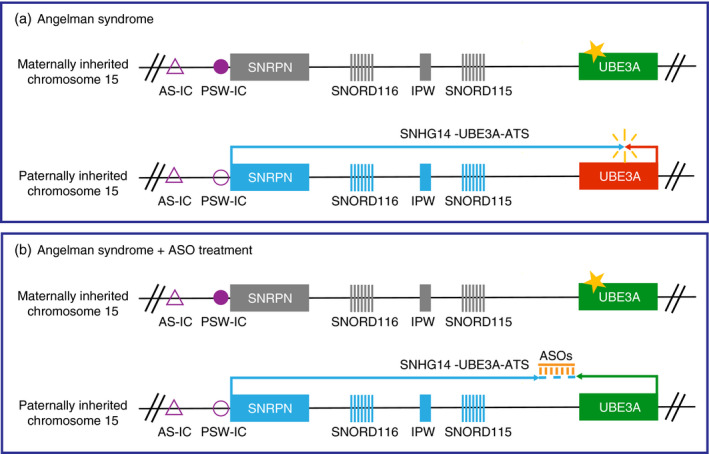Figure 2.

Mechanism of neuronal UBE3A imprinting and antisense oligonucleotide (ASO)‐mediated unsilencing of paternal UBE3A gene expression. (a) Overview of the UBE3A locus in neurons of an individual with Angelman syndrome with a mutation in the UBE3A gene (indicated with a star). Note that most patients with Angelman syndrome carry a maternally inherited deletion of the depicted region extending far beyond the Angelman syndrome Imprinting Center (AS‐IC) and the UBE3A gene. (b) Overview of paternal UBE3A expression in the Angelman syndrome condition upon ASO treatment (orange). Maternally imprinted genes are depicted in grey, the AS‐IC is indicated as an empty purple triangle. The lack of a methylated Prader–Willi syndrome Imprinting Center (PWS‐IC; indicated as an empty purple circle) allows for the transcription of the long non‐coding SNHG14 gene, also known as UBE3A‐ATS, which is responsible for suppressing paternal UBE3A transcription (red rectangle). The administration of ASOs leads to cleavage of the UBE3A‐ATS transcript, resulting in the unsilencing of the paternal UBE3A gene (depicted by a green rectangle), allowing restoration of synthesis of the UBE3A protein.
